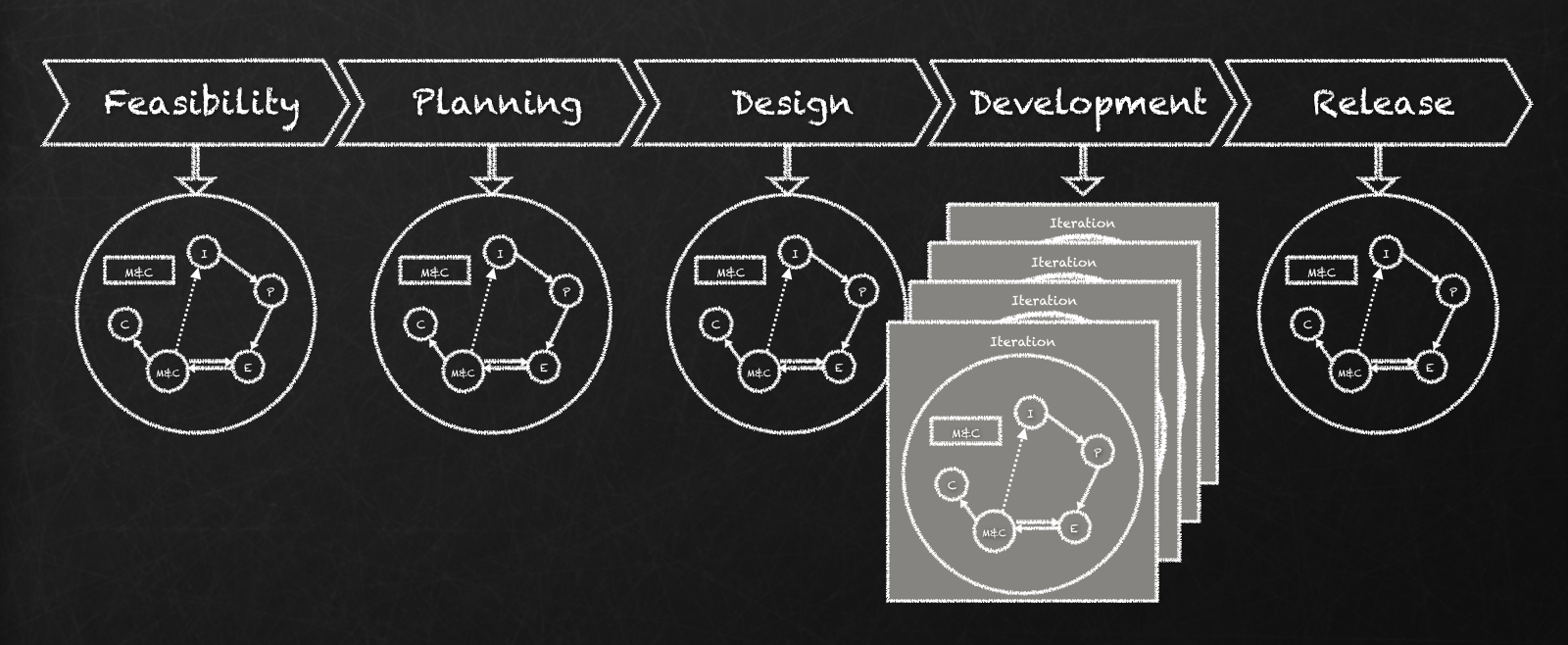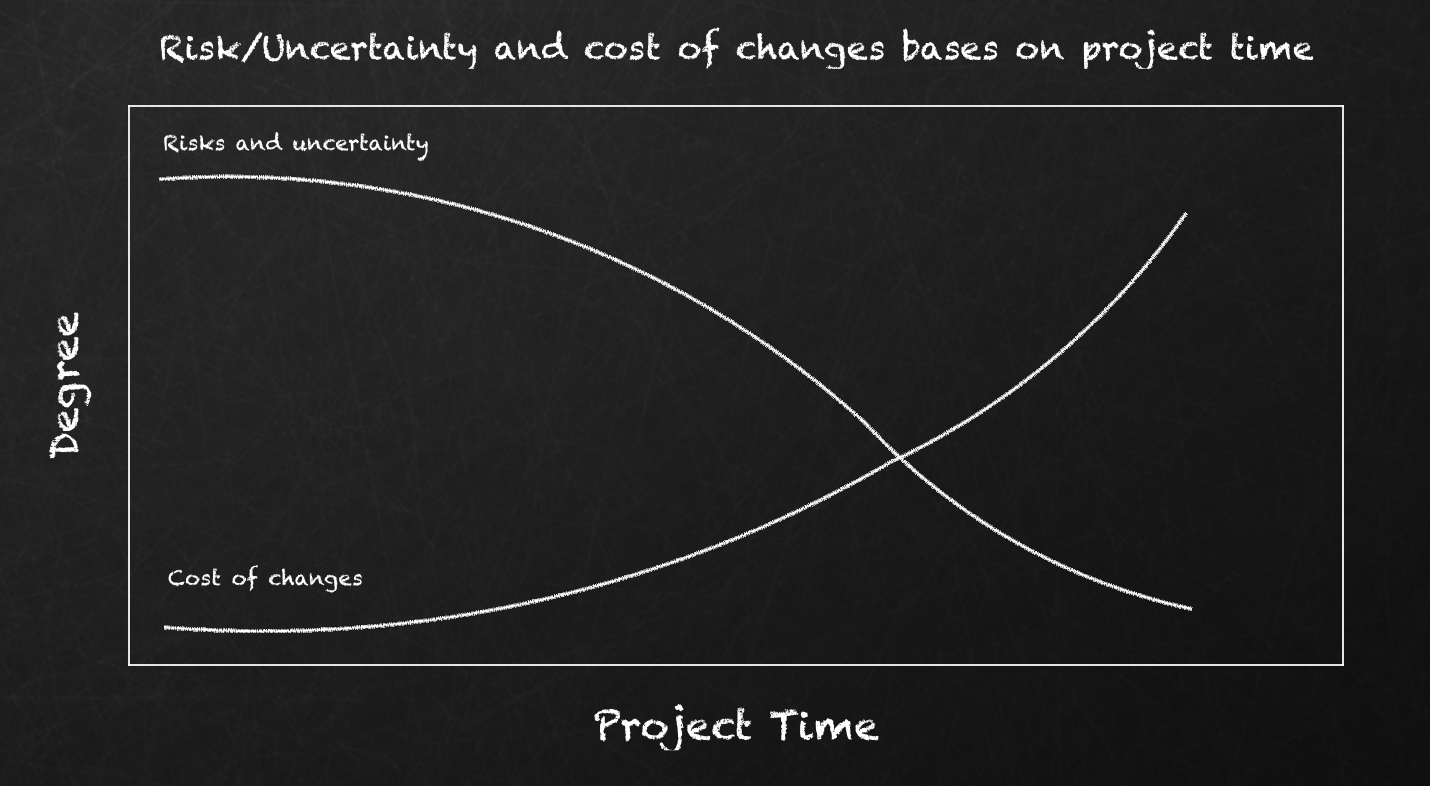Depending on the current moment in the project life cycle, an experienced project manager acts in a different manner.
Novice project managers usually overlook this important topic.
It looks very difficult.
However, unless you must create a custom project life cycle for a specific project, you need only a few simple but important concepts to know.
There are at least three useful applications of project life cycle theory that can help you manage a project:
1. Escape Ignorance
Just reading the next two paragraphs will make you more professional when discussing project management topics.
Do not confuse the Project Life Cycle with the Project Management Process. Moreover, do not confuse it with the Product Life Cycle.
These are three different concepts. Though sometimes they use similar terms in the description.
Project Life Cycle shows what should be done to produce project results.
In other words, what phases a project should live through to achieve its goal? In contrast, Project Management Progress describes what should be done to manage a project.
Here is how the Project Management Process interacts with the Project Life Cycle:
– On a large project:

– On a large agile project:

– On a small project:

On a small project, one Project Management Process cycle covers the whole Project Life Cycle. So here naming of phases and process groups can coincide.
2. Reduce Required Project management Efforts
Keep in mind that managing one large and complex project is harder than a series of small related projects.
Here are four main reasons to divide a project into phases (sub-projects):
1. To make the project manageable.
Some projects have deliverables that are so complex that it is impossible to manage them efficiently in one run.
In such cases, the project manager divides a project into phases that have tangible deliverables.
The total sum of all deliverables will produce the ultimate result. This way, the project manager will manage a set of small projects.
2. To separate the work of a different nature.
Deliverables of different phases may require engagement with different industries, skill sets, and organizations.
For example, creating a design of a new aircraft, producing an aircraft prototype, and testing the prototype.
It’s also relevant to separate different types of mental activities like Requirement Collection (brainstorming, workshops, interviews, etc.) from Testing (stress testing, black-box testing, performance measurements, etc.)
3. To make the project more predictable.
Deliverables of different phases may also require different executing and controlling processes.
In the same example as above, monitoring and controlling processes will be completely different.
4. To create project checkpoints.
The end of a phase results in a hand-off of it’s deliverable.
It is a good point to reassess the project’s chances for success and decide whether to continue or terminate it.
For example, after the Feasibility Analysis Phase, you produce a report. It shows that the project can be successfully finished only with severe functionality and safety reduction.
It might be unacceptable. The project will be terminated. The remaining resources will be given to a more valuable project.
A Project Life Cycle depends on the industry, nature of a project, management, and control needs. So naming and numbering of phases will differ in most cases.
However, there’s a generic life cycle that describes the main idea. It consists of four phases:
- Starting the project. In this phase, you research, investigate, and define the goals of the project end result. The specific examples are the Research Phase, Requirement Collection Phase, and Feasibility Analysis phase.
- Organizing and preparing. In essence, it is specifying requirements, creating product design, and planning. The real examples are the Product Design Phase, Product Architecture Phase, and Planning Phase.
- Carrying out the project work. The phase where you execute the work to produce the project result of the required quality. Examples are the Implementation Phase, Construction Phase, Development Phase, and Testing Phase.
- Closing the project. In this phase, you need to hand out the final project result, service, or product. Examples are Release (to the market) Phase, Transfer Phase (e.g., to Maintenance and Operations), and Close Out Phase.
Please note that phases of a project overlap as well as following consequently.
3. Act Correctly in the Current Moment
During a Life Cycle, required efforts and costs differ.
Work in the execution phases usually requires most of the resources.
Though, some projects might need expensive materials bought in advance or require an aggressive hiring process. Such projects will have a peak right after initiation.
In most cases, resource levels on your project will be quite close to the generic distribution, as shown in the diagram below.

Here is another chart. It shows levels of uncertainty/risks and the cost of changes in regards to project time.

Risks and uncertainty are higher at the beginning. They decrease as you get closer to the project end.
It explains the necessity of planning efforts aimed at reducing the level of uncertainty and planning responses to risks.
You do want to get clarity on the project scope as soon as possible.
If it’s impossible to clarify the scope at the start of a project, you can apply Rolling Wave Planning.
In essence, it means that you must include rough estimates of time, costs, and risks for work packages that are not yet clear.
The cost of change is lower at the beginning. While it might be very expensive or even impossible to change anything at the end.
I strongly recommend communicating the concept of the cost of a change to your stakeholders as clearly as possible.
It’s a good strategy to describe them the impact of changes during whole the project lifetime. Never assume that stakeholders are aware of it by default.
So, in general, you do not want changes to happen closer to the project end. They are costly, and you deplete most of your budget by that time. Be sure to get additional resources to implement such changes. Do not rely on remaining reserves.
Adaptive life cycles overcome these problems to some extent.
When you start a new project, revisit this post and take these four points into consideration. The chances are that you will find your project more transparent and easier to control.

